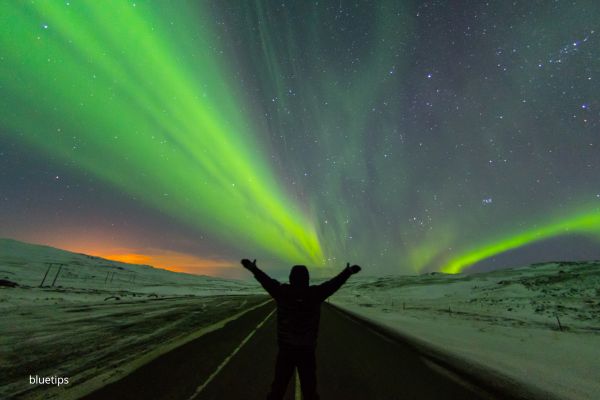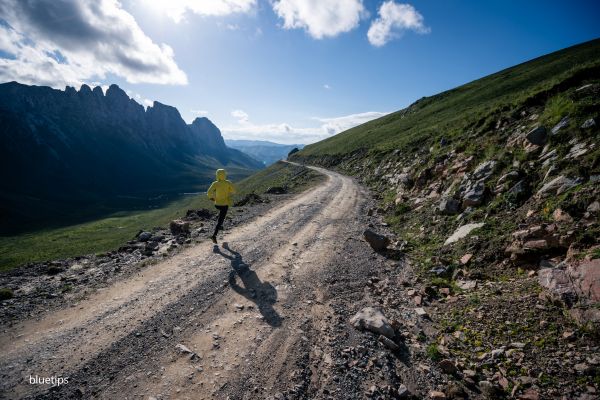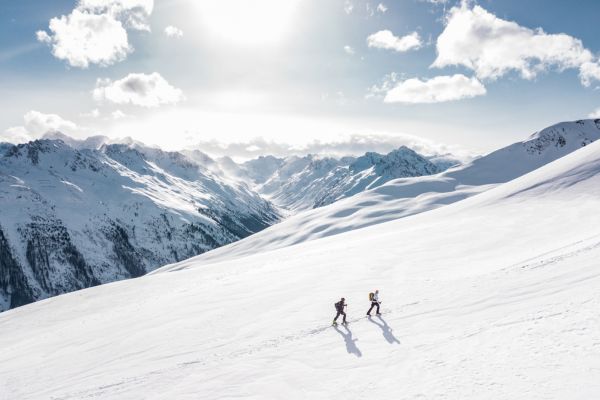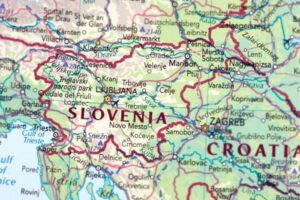Ready to embark on a thrilling adventure in the land of fire and ice?
Explore the world of ultramarathons and why Iceland has become a popular destination for these extreme endurance races.
From challenging terrain to stunning scenery, Iceland offers a unique experience for runners seeking the ultimate test of strength and resilience.
Delve into the most intense ultramarathon trails in Iceland and discover the health benefits of pushing your limits in this breathtaking country.
What Is Ultramarathon?
An Ultramarathon is an extreme long-distance running race that goes beyond the traditional marathon distance of 26.2 miles, typically covering distances of 50 kilometers or more.
These races are renowned for their grueling and demanding nature, pushing athletes to their limits both physically and mentally. Participants in ultramarathons need exceptional endurance and a high pain tolerance to overcome the harsh conditions, rugged terrains, and often unpredictable weather they encounter.
Endurance is truly the key factor in these races, as runners must maintain a steady pace for hours on end while navigating challenging routes. The ability to dig deep, both physically and mentally, is what sets ultramarathon athletes apart and makes these events a true test of human endurance.
What Are The Different Types Of Ultramarathon?
Ultramarathons come in various forms, catering to different terrains, durations, and challenges for runners seeking extraordinary feats of endurance and stamina.
Trail Ultramarathon
A Trail Ultramarathon takes participants through rugged terrains, dense forests, and breathtaking landscapes, providing runners with a unique and immersive experience in nature’s unspoiled beauty.
The winding paths of the trails lead runners through a symphony of colors and scents as they navigate the wilderness, truly connecting with the natural environment around them.
With each step, participants encounter the raw beauty of untouched nature, feeling the pulse of the earth beneath their feet.
The challenging terrains not only test their physical endurance but also allow them to experience a spiritual connection with the wilderness, offering a sense of freedom and tranquility amidst the serene surroundings.
Road Ultramarathon
A Road Ultramarathon tests runners on paved surfaces, demanding endurance, mental fortitude, and physical resilience as they traverse long distances on unforgiving roads.
The challenges of running a Road Ultramarathon extend beyond just the physical aspect, delving into the mental toughness needed to overcome the monotony of endless road stretches.
Endurance plays a critical role as runners must push through fatigue and maintain a steady pace amidst varying weather conditions and terrain.
The unforgiving nature of the road demands unwavering focus and determination, requiring participants to dig deep within themselves to keep moving forward, one step at a time.
Track Ultramarathon
A Track Ultramarathon involves continuous running on a circular track, testing athletes’ stamina, speed, and mental resilience over extended periods in a controlled environment.
The repetitive nature of circling the track can be physically demanding, requiring a high level of focus to maintain proper form and pace. Athletes must dig deep within themselves to push through the monotony and mental fatigue that can accompany running in loops.
Upholding consistent speed on each lap while managing the mental challenges becomes a battle of willpower and endurance. It’s not merely a test of physical fitness but also a mental game of overcoming self-doubt and maintaining motivation throughout the race.
Why Is Iceland A Popular Destination For Ultramarathon?

Iceland has emerged as a sought-after destination for Ultramarathons due to its captivating landscapes, rich Nordic heritage, and the allure of running in the footsteps of Viking warriors through stunning volcanic terrains and rugged wilderness.
The untouched nature of Iceland offers a unique blend of challenges and rewards for ultramarathon enthusiasts. The country’s diverse landscape, ranging from glaciers to geysers, provides a picturesque backdrop for runners seeking exhilarating routes. Adding to the appeal is the deep connection to Nordic culture, with traditional folklore and sagas woven into the fabric of Icelandic society. The historical significance of Iceland as the land of the Vikings adds an extra layer of intrigue, inviting participants to immerse themselves in the spirit of these legendary warriors while conquering the trails.
Challenging Terrain
Iceland’s Ultramarathons are renowned for their challenging terrain, which includes volcanic landscapes, glaciers, and rugged mountains that test the endurance and resilience of runners in extreme conditions.
The volcanic terrains in Iceland present a unique challenge for Ultramarathon runners, with unpredictable footing and sharp volcanic rocks adding to the difficulty. Glacier crossings require careful navigation due to crevasses and shifting ice, adding a level of danger to the already demanding race. The mountainous landscapes offer steep ascents and descents, testing not only physical strength but also mental fortitude. The combination of these diverse terrains creates an unparalleled test of endurance in a rugged and unforgiving environment.
Scenic Routes
The Ultramarathon routes in Iceland offer runners breathtaking views of Nordic wilderness, geothermal springs, and the enchanting Northern Lights, providing a memorable and immersive experience amidst Iceland’s stunning natural beauty.
As participants traverse through Iceland’s rugged terrains, they are greeted with expansive vistas of untouched landscapes and pristine valleys. Nordic wilderness surrounds them, showcasing a raw and untamed beauty that is both captivating and challenging.
The geothermal springs along the route offer a unique opportunity for weary runners to rejuvenate amidst nature’s soothing embrace. At night, under the dark Arctic sky, the mystical Northern Lights dance in a mesmerizing display of colors, adding an otherworldly charm to the already awe-inspiring journey.
Unique Cultural Experience
Running an Ultramarathon in Iceland offers participants a unique cultural experience immersed in Nordic traditions, Viking heritage, and the captivating sagas of Icelandic history, enriching the journey with the spirit of the North.
The connection to Nordic traditions and Viking heritage adds a mystical aura to the race, as runners traverse the stunning Icelandic landscapes that have inspired sagas passed down through generations.
The echoes of ancient tales linger in the air, fueling athletes with a sense of resilience and determination. Each step taken in the race becomes a tribute to the endurance and spirit of the Viking ancestors who once roamed these lands, creating a powerful link between past and present in the midst of the rugged beauty of Iceland.
What Are The Most Intense Ultramarathon Trails In Iceland?
Iceland boasts some of the most intense Ultramarathon trails, such as the Laugavegur Ultra Marathon, Fire and Ice Ultra Marathon, and The Highland Ultra Marathon, challenging runners with unforgiving terrains and extreme conditions.
These extreme races push athletes to their limits, as they navigate through rugged landscapes, volatile weather, and unpredictable terrain.
The Laugavegur Ultra Marathon takes runners across volcanic terrain, where scorching hot springs contrast starkly with icy glaciers. Similarly, the Fire and Ice Ultra Marathon lives up to its name, with participants facing blazing heat and bone-chilling cold within the same race. The Highland Ultra Marathon treks through remote, untouched wilderness, challenging even the most seasoned trail runners with its relentless ascents and descents. These events truly embody the essence of extreme trail running.
Laugavegur Ultra Marathon
The Laugavegur Ultra Marathon stands out as one of Iceland’s most intense races, challenging participants with rugged mountains, volcanic terrain, and unpredictable weather conditions along the iconic Laugavegur trail.
Runners face a true test of endurance as they navigate through the breathtaking but grueling landscapes, with steep ascents and descents that push their limits. The combination of towering mountains and vast volcanic expanses creates a surreal backdrop for this epic adventure.
The ever-changing weather adds an element of unpredictability, with runners often experiencing everything from sunshine to rain to snow within a single race. The Laugavegur Ultra Marathon truly captures the raw beauty and challenges of Iceland’s rugged terrain.
Fire and Ice Ultra Marathon
The Fire and Ice Ultra Marathon pushes athletes to their limits through a grueling course that traverses volcanic terrains, geothermal springs, and the iconic landscapes of Iceland’s fiery volcanoes and icy glaciers.
Runners in this extreme race must navigate treacherous paths surrounded by steaming geothermal springs, testing their endurance as they endure the intense contrasts between scorching volcanic heat and icy glacier winds. The constant battle between elements adds an unparalleled level of challenge, requiring participants to dig deep within themselves to overcome the obstacles presented by the dynamic and unpredictable nature of the course.
The Highland Ultra Marathon
The Highland Ultra Marathon takes runners on a remote journey through Iceland’s highlands, testing their endurance, navigation skills, and mental fortitude amidst the untamed beauty of the rugged terrain.
The course presents a multitude of challenges, from unpredictable weather conditions to steep inclines and rocky paths that push participants to their limits.
Every step in this grueling race demands unwavering perseverance and a deep reservoir of inner strength.
In such isolated surroundings, where the vast expanse of wilderness stretches endlessly, runners must contend with not only physical fatigue but also the psychological strain of confronting their own inner doubts and fears.
Overcoming these obstacles requires a level of mental resilience that goes beyond mere physical fitness.
What Are The Challenges Faced By Runners In These Trails?
Runners in Icelandic Ultramarathon trails encounter formidable challenges, including harsh weather conditions, difficult terrains, and limited support stations, requiring them to showcase exceptional endurance and perseverance.
The unpredictable and harsh environment in Iceland poses significant obstacles, with runners often battling extreme cold, relentless winds, and sudden weather changes that can quickly turn an already tough race into a true test of grit. Navigating through the rugged terrains with steep ascents, rocky paths, and uneven surfaces demands not only physical strength but also mental fortitude. The scarcity of support stations means that runners must meticulously plan their nutrition and hydration strategies to sustain themselves over long distances, pushing their limits of endurance to the edge.
Harsh Weather Conditions
The unpredictable and extreme weather conditions in Iceland present a significant challenge for Ultramarathon runners, with sudden changes, heavy winds, and cold temperatures adding to the already demanding race conditions.
Runners participating in Ultramarathons in Iceland must be well-prepared to face the harsh elements, as the weather can shift rapidly from sunny to stormy and back again within a matter of hours. The heavy winds in certain regions of Iceland can be unrelenting, making it difficult for runners to maintain their pace and stay on course. The cold temperatures demand that runners wear appropriate gear to prevent hypothermia and frostbite, adding an extra layer of complexity to an already grueling endurance race.
Difficult Terrain
The rugged and varied terrains in Icelandic Ultramarathon trails, including volcanic landscapes, steep ascents, and rocky paths, demand runners to navigate through tough conditions that test their physical and mental resilience.
These challenging terrains present a unique set of obstacles for participants, with the volcanic landscapes adding an element of unpredictability to the race. The steep inclines require runners to dig deep and summon their inner strength to conquer the demanding terrain. Negotiating the rocky paths demands agility and quick thinking, as one wrong step could lead to injury. It is not just a physical test but also a mental battle, pushing runners to their limits and showcasing their determination to overcome the rugged Icelandic terrain.
Limited Support Stations
The scarcity of support stations along Icelandic Ultramarathon trails forces runners to carry essential supplies, rely on their endurance, and demonstrate unwavering stamina to sustain themselves throughout the demanding race.
Having to endure the rugged terrains and unpredictable weather conditions without the convenience of regular support stations means that runners must possess a heightened level of self-sufficiency. Their endurance is put to the ultimate test as they navigate through challenging landscapes, pushing themselves to their physical and mental limits. Effective resource management becomes crucial in this situation as every ounce of energy and every supply item becomes a precious asset that needs to be utilized wisely to complete the race successfully.
How To Prepare For An Ultramarathon In Iceland?

Preparing for an Ultramarathon in Iceland involves training in similar conditions, acclimating to the climate, and packing the right gear to ensure optimal performance and safety amidst the challenging Icelandic landscapes.
Training in terrains comparable to the rugged Icelandic landscape is crucial for athletes looking to excel in an Ultramarathon. By simulating the conditions they will face during the race, such as rocky paths, unpredictable weather, and varying elevations, runners can better prepare both mentally and physically. Building endurance and resilience through long-distance runs and hill training can significantly improve an athlete’s performance during the demanding race.
Adjusting to the unique weather patterns of Iceland, characterized by strong winds and potential temperature fluctuations, is essential for athletes to navigate the course successfully.
Train In Similar Conditions
Training for an Ultramarathon in Iceland requires simulating the challenging terrains, weather conditions, and elevation changes that runners will encounter during the race, preparing athletes both physically and mentally for the demanding course.
To replicate these conditions, runners often train in Iceland’s rugged landscapes, tackling steep inclines, rocky trails, and unpredictable weather patterns. Long-distance runs over lava fields, glaciers, and mountainous regions help build the endurance and mental fortitude needed to conquer the race. Incorporating strength training, interval runs, and hill repeats into their regimen further enhances runners’ ability to navigate the demanding terrain of the Ultramarathon course. Embracing the harsh but breathtaking Icelandic environment during their training prepares athletes for the unpredictable challenges they may face on race day.
Acclimate To The Climate
Acclimating to Iceland’s Nordic climate is essential for Ultramarathon participants, as the fluctuating temperatures, wind patterns, and daylight variations pose unique challenges that require physical adaptation and mental preparedness.
Being able to adjust to the changing climate conditions in Iceland not only helps athletes perform better but also ensures their safety during the grueling Ultramarathon events. By familiarizing themselves with the specific weather dynamics of the region, runners can strategically plan their gear, hydration, and race strategies. Understanding how the cold, wind, and limited daylight hours can impact their bodies allows participants to make informed decisions to optimize their race experience. Climate acclimation is not just about endurance; it’s about adapting to and embracing the elements to conquer the Icelandic terrain.
Pack The Right Gear
Choosing and packing the right gear for an Ultramarathon in Iceland is crucial, as durable footwear, weather-resistant clothing, hydration packs, and nutrition supplies are essential for sustaining endurance and performance throughout the race.
- When selecting footwear, opt for trail running shoes with good grip and ankle support to navigate Iceland’s rugged terrain.
- Layering is key for clothing, with moisture-wicking base layers, insulating mid-layers, and waterproof outer shells.
- Stay hydrated by carrying a hydration pack or water bottle, replenishing electrolytes with energy gels or sports drinks.
- Pack snacks rich in carbs and protein for sustained energy levels.
Proper gear preparation ensures you’re well-equipped to tackle the challenges of an Ultramarathon in Iceland with resilience and confidence.
What Are The Health Benefits Of Running An Ultramarathon?
Running an Ultramarathon offers a myriad of health benefits, including improved cardiovascular health, increased endurance and strength, and enhanced mental resilience and stress relief, making it a holistic exercise for athletes seeking physical and mental well-being.
Engaging in Ultramarathons not only boosts cardiovascular fitness by strengthening the heart and improving circulation but also enhances endurance capacity, enabling individuals to push their limits beyond traditional running distances.
The rigorous training involved in preparing for such challenging races contributes to building muscular strength and toning the body. The mental fortitude required to complete an Ultramarathon improves mental resilience, instilling a sense of accomplishment and stress relief in participants.
Improved Cardiovascular Health
Running an Ultramarathon promotes enhanced cardiovascular health by strengthening the heart muscle, improving circulation, and increasing overall fitness levels, supporting long-term heart function and endurance capacity.
Endurance running helps to optimize the functioning of the cardiovascular system by boosting the heart’s efficiency in pumping oxygenated blood throughout the body.
Regular participation in Ultramarathons can lead to a decrease in resting heart rate, lower blood pressure, and improved blood vessel flexibility.
These benefits not only contribute to a healthier heart but also enhance the body’s ability to deliver oxygen and nutrients to muscles efficiently during physical activities, ultimately improving overall cardiovascular fitness.
Increased Endurance and Strength
Participating in Ultramarathons enhances endurance and strength levels, as the prolonged running distances and challenging terrains build muscular endurance, physical resilience, and strength in athletes, improving overall performance and fitness.
This type of extreme distance running not only challenges the body physically but also fosters mental toughness and discipline in individuals. Athletes who engage in Ultramarathons often undergo rigorous training regimes, which further contribute to their muscle endurance and strength development. Pushing the boundaries of their physical capabilities, these athletes continually test their limits and surpass them, leading to remarkable improvements in their overall athletic performance and resilience against physical stressors. The demanding nature of Ultramarathons truly proves that endurance and strength go hand in hand in shaping these athletes into formidable competitors.
Mental Resilience and Stress Relief
Running Ultramarathons cultivates mental resilience and provides stress relief through the mental challenges faced during the race, the sense of accomplishment, and the release of endorphins that promote a positive mindset and emotional well-being.
The process of training for and participating in Ultramarathons offers individuals a unique opportunity to push past their perceived limitations, fostering a strong sense of mental toughness and determination. The long hours spent running alone or with fellow runners enable a deep introspection that helps in managing stress and anxiety. The euphoric high experienced from the release of endorphins during extended runs not only reduces pain perception but also boosts mood and overall psychological well-being.
Frequently Asked Questions

What is the In the Footsteps of the Vikings ultramarathon in Iceland?
The In the Footsteps of the Vikings ultramarathon in Iceland is a challenging race that follows the historic routes of the Vikings through the rugged terrain of Iceland. It is a 250km race that takes runners through some of the most beautiful and intense trails in the country.
How long is the ultramarathon and what is the course like?
The ultramarathon is 250km long and takes place over 6 days. The course is a mix of challenging terrain, including steep inclines, rocky paths, and river crossings. Runners will also pass through volcanic landscapes, glacier valleys, and lush green forests.
What are the weather conditions like during the race?
Iceland is known for its unpredictable weather, and runners should be prepared for all types of conditions. The race takes place in July, which is typically the warmest month in Iceland, but temperatures can still range from 5-20 degrees Celsius. Rain and wind are also common, so runners should be prepared for all weather possibilities.
How do I prepare for the In the Footsteps of the Vikings ultramarathon?
Training for an ultramarathon in Iceland requires a combination of physical and mental preparation. Runners should have experience with long-distance running and be comfortable navigating through difficult terrain. It is also important to acclimate to the weather conditions and train with a backpack and all necessary gear.
What kind of support is provided during the race?
The race organizers provide a support team that will be stationed at every checkpoint along the course. They will have food, water, and medical supplies available for runners. There will also be designated campsites for runners to rest and recharge overnight.
Is this race suitable for beginners?
The In the Footsteps of the Vikings ultramarathon is a very challenging race and is not recommended for beginners. It requires a high level of physical and mental endurance, as well as experience with long-distance running. It is best suited for experienced ultramarathon runners who are looking for a unique and difficult challenge.




